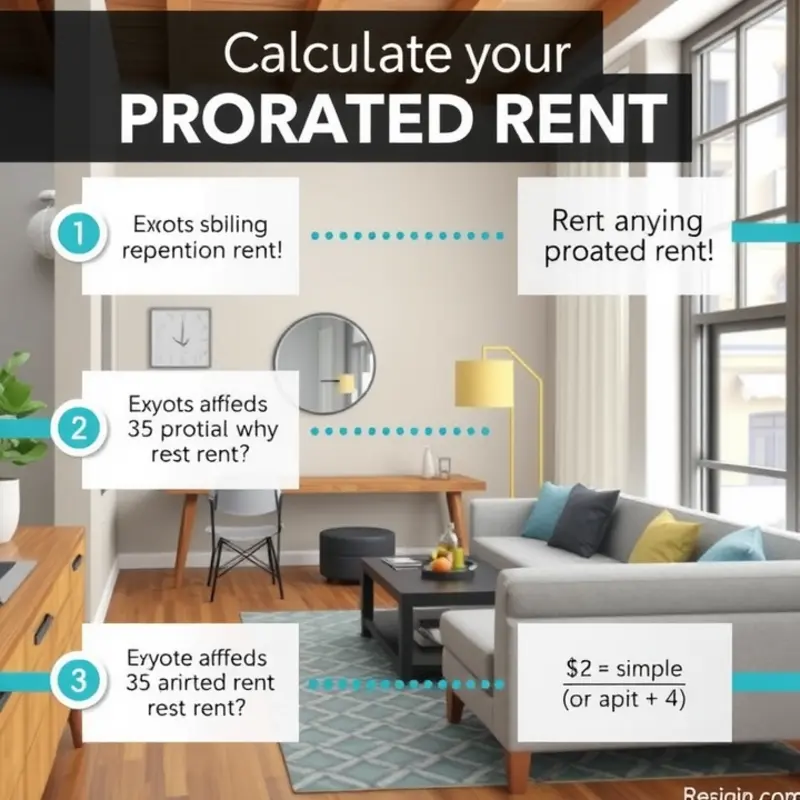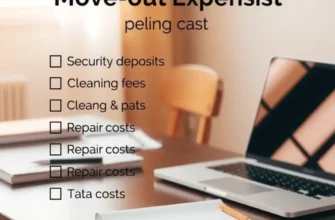Navigating the world of renting can feel daunting, especially when it comes to understanding the nitty-gritty of your lease. One common area of confusion is prorated charges, which often pop up during your lease term. Whether you are a young professional, a first-time renter, or a family looking for a new home, knowing how prorated charges work can save you money and keep your budget in check. Prorating is typically applied when you’re renting for only part of a month or if your rent is due on a different date than the one stated in your lease. With this knowledge, you’ll be equipped to ask the right questions and avoid unexpected fees. This guide will take you through the essentials of prorated charges, breaking them down into easy-to-understand segments, so you can savvy up your lease negotiations. By the end, you’ll have a clear grasp of not only what prorated charges are but also how to manage them effectively to ensure your renting experience is smooth and financially sound.
What Are Prorated Charges?

Prorated charges can initially seem like a complex concept for new renters. However, understanding them is essential to grasp how rental finances function throughout the lease period. Simply put, prorated charges refer to the adjustments made to rent payments based on a partial rental period.
When you rent an apartment, the lease agreement typically outlines a fixed monthly rent. However, situations often arise where you may not occupy the unit for the entire month. This could be due to moving in mid-month or moving out early. In such cases, prorated charges come into play, ensuring that you only pay for the days the property was actually available to you.
To calculate prorated rent, start by determining the daily rental rate. If your monthly rent is $1,500, divide this amount by the number of days in that month. For example, in a month with 30 days, the daily rate would be $50. Suppose you move in on the 10th of the month. You would then multiply the daily rate by the number of days you live in the apartment, which in this case is 21. Therefore, the prorated rent would be $1,050.
Understanding prorated charges is crucial not only for ensuring you are fairly billed but also for budgeting during the transition periods. Accurately calculating these charges can prevent you from overpaying and help manage your financial planning effectively.
It’s also important to know that sometimes landlords may have specific methods for calculating prorated rent. Read your lease agreement carefully, or ask your landlord to clarify how they handle prorated charges. Some agreements might calculate the daily rate based on a standardized 30-day month or apply other variations.
Being informed about these charges ensures transparency in your financial interactions with your landlord. Couple it with tools for effective financial planning, and you streamline your rental experience seamlessly. For additional guidance on effectively managing your finances as a renter, consider checking out these renter credit improvement tips.
Prorated charges play an integral role in preventing financial discrepancies in lease agreements. By equipping yourself with the knowledge of how these adjustments work, you empower yourself to make informed and fair decisions concerning your rental payments.
How to Calculate Prorated Charges

Calculating prorated rent can seem daunting at first, but understanding this process is crucial for ensuring you’re billed correctly. Prorated rent is typically necessary when you rent an apartment for less than a standard billing cycle, usually a month. This step-by-step guide will walk you through the process of calculating prorated rent, empowering you to make informed decisions.
To start, it’s important to know the length of the billing cycle for your particular lease. Most leases follow a monthly billing cycle, so the first step is finding out how many days are in the month for which you need to calculate prorated rent.
Here’s a simple formula to calculate prorated rent:
-
Determine the daily rent rate: Divide the total monthly rent by the number of days in the month. For example, if your rent is $1,200 for a 30-day month, the daily rent rate is $1,200 ÷ 30 = $40 per day.
-
Calculate the number of days you’ll occupy the rental unit: If you move in or out mid-month, count the days you’re responsible for the unit. For instance, if you move in on the 10th and the month has 30 days, you’d be occupying the unit for 21 days.
-
Multiply the daily rent rate by the number of days you’ll occupy: Using the previous example, multiply the $40 daily rate by 21 days, resulting in $840 prorated rent for that month.
Several potential pitfalls can arise when using this method, so it’s crucial to verify all calculations. Carefully check the lease for any clauses about prorated charges and ensure you understand the specific circumstances that may affect your rent.
Also, consider whether utilities or other fees are included in the monthly rent. If so, determine if these need prorating separately or if they follow the same prorated calculation.
Tip: Remember to confirm the number of days in February, as it can vary depending on whether it is a leap year.
If you would like more insights into managing your finances as a renter, consider checking out our financial planning tips for renters. Making these calculations accurately ensures your financial plans remain on track.
By following these steps, you can confidently calculate and verify prorated charges, ensuring you’re charged correctly every time.
Final words
Understanding prorated charges equips you with the knowledge needed to navigate and manage your rental lease better. By grasping the fundamentals of how these charges work and learning to calculate them accurately, you can prevent unexpected costs and ensure your budget remains intact. Whether you’re getting ready to sign a lease or managing your current agreement, being informed puts you one step ahead. Remember to communicate clearly with your landlord about any prorated charges, and don’t hesitate to seek clarification if needed. With this understanding, you can approach your rental journey with confidence.









